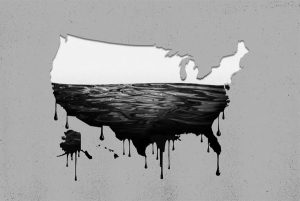
By William Watts / Market Watch
SAN FRANCICO
Petroleumworld 11 23 2021
A case of “sell the rumor, buy the fact” appeared to be in play Tuesday as oil futures bounced higher after the White House announced the U.S. and other countries would release crude from strategic reserves in an effort to push down energy prices.
The U.S. will release 50 million barrels of crude from its Strategic Petroleum Reserve, or SPR, while China, India, South Korea and the U.K. will tap their supplies. Talk of a coordinated release has hung over the oil market in recent weeks, with traders pricing in the potential for a large release, analysts said.
Oil initially extended a decline after the White House announcement, but then turned higher. West Texas Intermediate crude for January delivery CL00, -0.09% CLF22, -0.09% advanced $1.75, or 2.3%, to finish at $78.50 a barrel on the New York Mercantile Exchange. January Brent crude BRN00, -0.16% BRNF22, -0.16%, the global benchmark, rose $2.61, or 3.3%, to end at $82.31 a barrel on ICE Futures Europe.
Both benchmarks have seen four straight weekly losses, ending Friday at seven-week lows.
Gasoline futures also rose, with the December contract RBZ21, -0.61% up 7.70 cents, or 3.4%, at $2.3372 a gallon on Nymex. Pump prices for gasoline have jumped more than 60% from pandemic-depressed levels seen a year ago, according to The Wall Street Journal. The national average price for unleaded regular gasoline stood at $3.403 a gallon on Tuesday, according to AAA.
“While the volume itself warrants attention — 50 million barrels could supply roughly half the world for a day — the most significant part of the announcement though is the coordination among some of the world’s leading consumers and importers as a sort of temporary challenge to OPEC+’s command on the market,” said Robbie Fraser, global analytics and research manager at Schneider Electric, in a note, referring to the Organization of the Petroleum Exporting Countries and its allies.
“At the same time, strategic reserves will never be the ideal tool for addressing issues created by persistently undersupplied conditions,” he said.
Questions remain over the need for action, said Warren Patterson, head of commodities strategy at ING, in a note, observing that COVID-related worries are on the rise as Europe imposes new restrictions.
The move also risks a potential response from the Organization of the Petroleum Exporting Countries and their allies, known as OPEC+, analysts said.
The group had rebuffed calls by President Joe Biden to accelerate output increases, and a Bloomberg report on Monday said members were prepared to rethink existing plans to gradually increase output in the event of a coordinated release of supplies from strategic reserves.
OPEC+ has been bumping up production quotas in monthly increments of 400,000 barrels a day.
“A resurgence of COVID-19 in Europe coupled with a potential release may be reason enough for the group to decide against a production hike of 400,000 barrels a day when they meet in early December,” Patterson said. “The prospect of retaliation from OPEC+ does leave the potential for further volatility in oil markets.”
January natural-gas futures NG00, -0.08% jumped 17.80 cents, or 3.7%, to $4.9670 per million British thermal units, while December heating oil HOZ21, +0.01% jumped 5.89 cents, or 2.5%, closing at $2.3843 a gallon.
______________________________________
By William Watts / Market Watch
marketwatch.com 11 23 2021
Copyright ©1999-2021 Petroleumworld or respective author or news agency. All rights reserved.
Petroleumworld.com Copyright ©2021 Petroleumworld.









